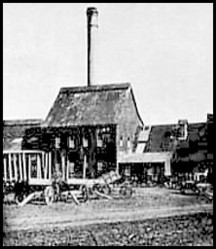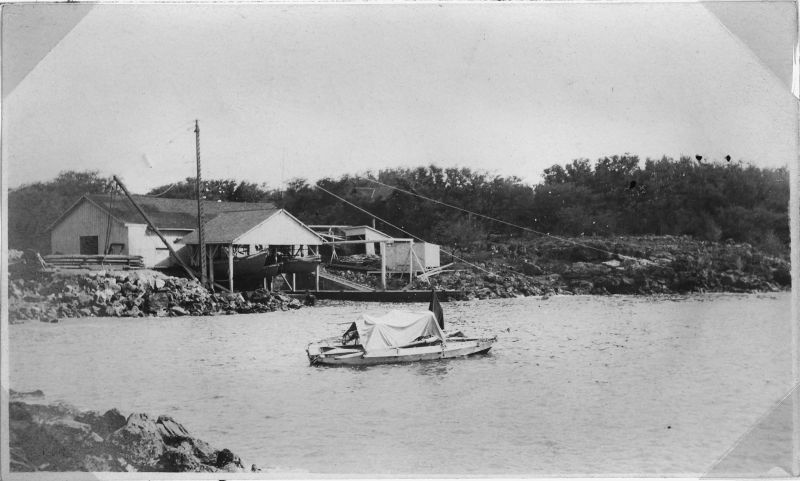Digital Collections
Celebrating the breadth and depth of Hawaiian knowledge. Amplifying Pacific voices of resiliency and hope. Recording the wisdom of past and present to help shape our future.
Kīhei de Silva
Haku mele: The song is credited by Waikiki Records (45-563) to M. Smith. The early texts, however, fail to name Smith or any other composer.
Sources: 1) "Sugar Boiler," Commonplace Book of Edward K. Lilikalani (1852–1917), Lili‘uokalani Collection, HI. M.4:3, Bishop Museum Archives. 2) Mader Collection, MS Grp 81, 10.43, Bishop Museum Archives. 3) Kimo Alama, Puke Mele, I:68–89, and MS Grp 329, 5.42 Bishop Museum Archives.
Discography: 1) The Hilo Kalimas, Your Musical Tour Around the Island of Hawai‘i, Hula SRB 2398. 2) Lani, Lahela, and Nina, "Mahukona," Waikiki Records (45 rpm) 45-563. 3) Naipo Inc., From Kohala to Waimanalo, Poki SP9018.
Text below: As sung by the Hilo Kalimas and edited by Kīhei de Silva. Translation: Kīhei de Silva.
A waho aku au o Māhukona lā
Hana‘i‘o ka ua iā Kohala lā
A la‘a wale nō kā ho‘i lā
Ka huila a‘o Kīlauea lā
Hele kapalulu nei ‘ili wai lā
A komo i ka ipu ho‘omo‘a lā
‘O ka mo‘a paha ia o ke kō lā
Ke pipi‘i nei ma ke aniani
Ha‘ina ‘ia mai ka puana lā
Ka huila a‘o Kīlauea lā.
I am outside Māhukona
The rain pours down on Kohala
It serves you right,
Kīlauea’s propeller
To come whirring over the water
Only to enter a boiling pot
It is perhaps the cooking sugar
That bubbles up on the glass
This ends my song
Of the Kīlauea’s propeller.
The Kīlauea was a propeller-driven, sail-assisted, interisland steamship that plied Hawaiian waters during the reigns of Kamehameha IV, Kamehameha V, Lunalilo, and Kalākaua. The ship began service in 1860 and finally retired in 1877; in those 17 years, he (Hawaiians of the day found in Kīlauea a decidedly male presence) had easily won the affection of his customers and earned a reputation as a tireless, resilient, somewhat accident-prone workhorse of the sea. At the time to which our song refers (probably the 1870s when Kīlauea’s regular run took him between Maui and Hawai‘i), the village of Māhukona on the Kohala coast of Hawai‘i Island was a busy port at which the Kīlauea frequently stopped in order to serve the commercial needs of the Kohala Sugar Plantation.
The wonderful—and frustrating—ambiguity of the song "Māhukona" allows for a variety of interpretations. 1) It can be seen as the poetic description of a storm that forces the Kīlauea to interrupt its service to Māhukona: the ship waits outside the sugar port while the rain pours down on Kohala; the ocean is compared to a cooking pot whose contents are at full boil; the Kīlauea simply has to ride it out. 2) The song can be seen as the poetic description of an enthusiastic male lover whose energy is compared to the tireless Kīlauea and whose passion results in the bubbling-over of a sugar boiler. 3) The song can be seen as the poetic description of a disappointed suitor who hurries confidently to a lovers’ assignation at Kohala, only to be disillusioned at Māhukona by the discovery that his sweetheart has found someone else with whom to make sugar.
"Māhukona" opens innocently enough with a description of the Kohala scene: the narrator is outside the port of Māhukona while the rain’s activity inland is characterized as hana ‘i‘o, "really coming down." Because hana ‘i‘o also means "serious about what one does; to consummate, as a love affair," our poetic antenna begin to vibrate with possibilities: do we have here, in the activity of ship, port, and rain, a metaphor of love-making? Is this activity one in which our sailor-narrator is actively engaged? Or is he left out of what is happening "inside" between his sweetheart and someone who is perhaps more deserving of her attention? In many Hawaiian boat songs, the sailor is defined as ‘ai ho‘okano, "one who eats food that has not been prepared for him"—in other words, a man who fools around with women not his own. If we follow the jilted-sailor interpretation of "Māhukona," then we find here an interesting departure from the stereotype: our girl-in-every-port sailor is left out in the cold; he arrives too late; the tables are turned.
Kimo Alama’s interpretation of the song seems to follow this last line of thought. He notes that the place-name Kohala is "symbolically used here to show that someone has been drawn away (kō is to draw and hala to the point of no return—something has passed)." Thus "Māhukona" is about "disappointment in love;" a woman has been drawn away from her Kīlauea sailor, and his true love for her "has now turned to pain" (Puke Mele, I:68). If we, in turn, follow Alama’s lead, we can translate Māhukona to mean "leeward steam" (Pukui, Place Names of Hawai‘i, 138); when considered in light of the song’s subsequent description of a boiling pot and its bubbling contents, this place name seems to hint at both the poet’s frustration over steamy activities in which he cannot participate, and at his own head of suddenly useless steam.
The next interpretive juncture of "Māhukona" occurs with the first line of verse two: "A la‘a wale nō kā ho‘i lā." Kimo Alama’s translation of the line ("Just like no other") hinges on the meanings of la‘a as "set apart" and "such as" and paints a somewhat boastful picture of the Kīlauea and the man it symbolizes. If, however, we translate the line as an idiomatic expression similar to Pukui’s "A la‘a, a la‘a lā" ("So you did get in trouble, hurt, serves you right! I told you so!"), the tone of the verse changes considerably from boast to self-recrimination. In either case, the object of the narrator’s attention is the boat’s huila. Although Alama translates the word to mean "paddle wheel," the Kīlauea was powered not by a side or stern-mounted wheel, but by a single propeller. Huila, I would guess, is the short form of huila ho‘one‘e: a ship’s screw or propeller. In one sense this huila is la‘a—it is a unique, physical, decidedly male attribute for which there is no equal. In another sense this huila is a la‘a lā—an object of disappointment that, regardless of reputation or potency, has been rendered useless by its late arrival.
The ambiguity of verse three lies in the possibly condensed grammar of its first line and in the multiple meanings of ‘ili wai. If we play with the text a bit, the subject of the first line can be understood as the huila of the previous verse: "(Ke) Hele kapalulu nei (ka huila i) ka ‘ili wai"—"The propeller is whirring through the water’s surface." Or: "Hele kapalulu (ka huila i) nei ‘ili wai"—"The propeller whirs through this watery surface." On the other hand, the subject of the line can be taken at face value as ‘ili wai: "Hele kapalulu nei ‘ili wai"—"This ‘ili wai goes whirring." ‘Ili wai, besides meaning "water’s surface," also means "water hose." We wonder, then, if the propeller of verse two has simply transformed into the hose of verse three (though the metaphor changes, its referent is still the same), or whether propeller has been replaced by hose in the same manner that our sailor himself has been replaced by a new suitor. Whether we take the whirring object of this first line to be propeller or hose, sailor or new suitor, the third verse concludes with that object’s entry into an ipu ho‘omo‘a ("cooking pot") or ipu ho‘omo‘a kō ("sugar boiler"). This activity can be interpreted in at least four ways: 1) as a literal description of the plumbing of an ipu ho‘omo‘a; 2) as the sexual activity in which the sailor is intensely engaged; 3) as the sexual activity that the sailor unhappily encounters; and 4) as the pot of trouble—natural or human—in which he currently finds himself stewing.
The song’s penultimate verse expands on the imagery of what is now definitely a sugar boiler. I am not familiar enough with the design of that 19th century piece of machinery to know if it was equipped with an aniani ("glass viewing port or gauge"); this, however, would seem to be the literal intent of the verse: as the cane is cooked, it boils up and climbs the sides of the boiler; a port or gauge of some kind indicates the rising activity within. Pipi‘i refers to love-making as well as climbing and bubbling, and aniani is also connotative of something "clear, transparent, obvious." The cane is obviously boiling. The conditions at Māhukona are obviously turbulent. The lovers are obviously at a climactic juncture. What is not obvious is the identity of these lovers: the song concludes without ever defining its context as that of a first or second-hand experience. Does the sailor find love for himself, or does he find others in the act of love? That ambiguity is the spice and riddle of "Māhukona."
A longer version of the song can be found in E. K. Lilikalani’s scrapbook (HI. M.4:3) under the title "Sugar Boiler." The song’s four extra verses add to our picture of the boat’s energetic propeller (it is a spinning, iron huila that churns, without restraint, through a succession of waves), provides a third metaphor for the boat’s special part (it is a curved tool that runs every which way), and casts aspersions on the conduct of the song’s heroine (she is compared to the beautiful but promiscuous schooner Nettie Merril who lifts her bow to every wind). Although these extra verses contribute significantly to the tongue-in-cheek language of the composition, they offer us nothing in the way of ambiguity-resolution.
The essay above was written by Kīhei de Silva and published in his book He Aloha Moku o Keawe: A Collection of Songs for Hawai‘i, Island of Keawe, Honolulu, 1997, pps. 49–52. It is offered here, in slightly revised and updated form, with his express consent. He retains all rights to this essay; no part of it may be used or reproduced without his written permission.

photo credit: Kohala Net
The Kohala Sugar Mill at Hala‘ula. By 1883, five of Kohala’s six plantations were served by Samuel Wilder’s Hawaiian Railroad Co. The HRC trains hauled sugar along the 20 miles of track that ran from Niuliʻi to Māhukona where Wilder had built a storehouse and numerous wharf facilities to upgrade the port and establish it as the shipping hub of the North Kohala sugar industry.

photo credit: U.S. National Archives
Māhukona in the early 1900s. The port was closed for security reasons in 1941 and, except for a small section that survived until 1955, was not reopened at the end of World War II. The declining sugar industry, in concert with bulk processing and truck transportation, had by then rendered the facility obsolete.